COVID-19 TREATMENT
The world is scrambling for cure from &&4&. They are many different treatments being proposed and go on clinical trials.
While some clinicians have suggested success with certain treatments,
many have reported poor clinical efficacy of these treatments and worse,
some of these may even be potentially dangerous and worsen the already overwhelming problems.
&&11& provides you with valuable information on many of those upcoming treatments.
Global Wellness Force, April 2020
In general, management for &&4& is in fact similar to most other infectious illness which can be categorized into supportive care and definitive treatment.
While definitive treatment is treatment provided to eradicate the cause of the disease, supportive care refers to care given to improve the quality of life of the patients.
The goals of supportive care are:
- to prevent and treat as early as possible the symptoms of the disease,
- to treat the problems related to the disease itself or
- to treat the problems related to treatment of the disease.
There are several supportive cares for &&4& management.
Many supportive cares for &&4& patients with mild clinical presentation can be provided at home and do not require hospitalization such as control for fever, cold and gastrointestinal symptoms.
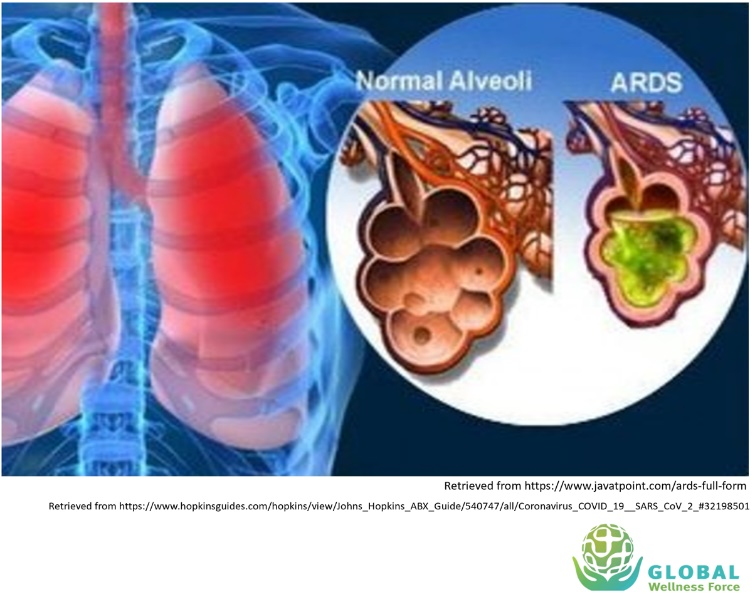
This picture shows the comparison of alveoli or lung air cells in normal and sick lung. Air exchange occurs through our lungs in the alveoli.
As &&4& patients get pneumonia or lung infection, the air exchanges inside the alveoli decreases.
In cases with severe pneumonia with acute respiratory distress syndrome (ARDS), there is very little or no air exchange inside the sick alveoli.
For &&4& patients with lung infection or pneumonia that is associated with hypoxia or decrease body oxygen level,
the supportive care may include providing extra air with increase oxygen concentration, or oxygen supplementation,
to optimize the sick alveoli to get the very much needed oxygen into the body. Oxygen supplementation can be delivered through non-invasive nasal canula for less severe pneumonia
cases to a more invasive method through intubation and respirator or ventilator for those with severe pneumonia and ARDS.
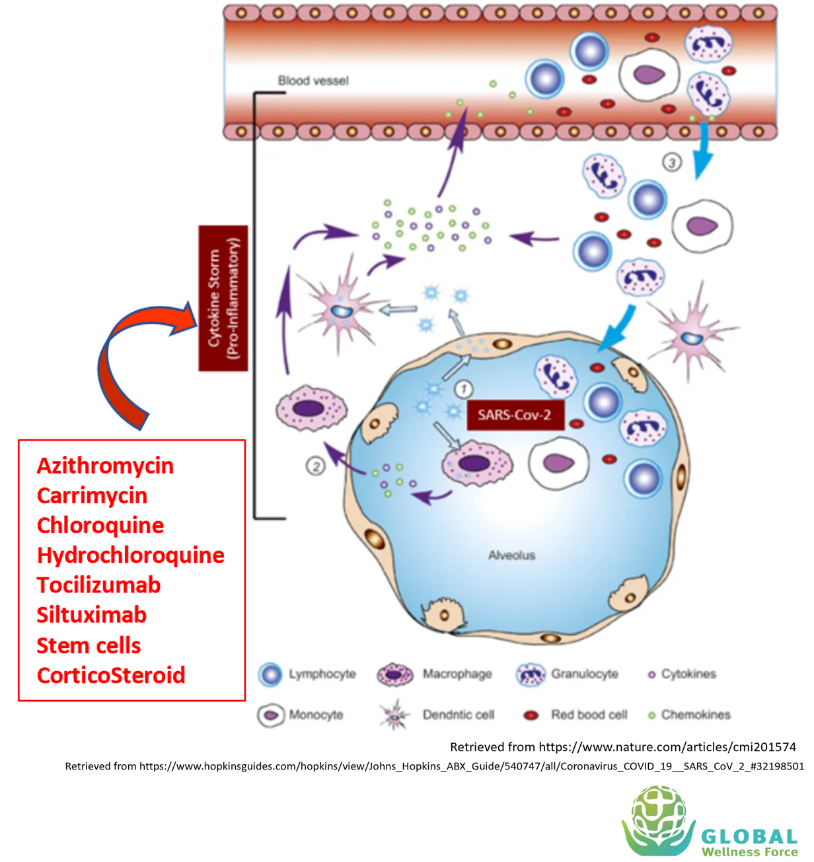
Other form of supportive care in &&4& management is to gain control over body proinflammatory responses as shown in the picture. Person with intact immune responses suffering from &&4& pneumonia,
the &&12& infects the alveoli and triggers the cells immunity response by releasing special chemical, cytokine.
This proinflammatory cytokine is intended to trigger body response to fight and kill the &&6&. Unfortunately,
human body frequently produces extensive proinflammatory cytokines leading to proinflammatory cytokine storm. Human body also produces anti-inflammatory cytokines.
When these anti-inflammatory cytokines are outbalanced by the proinflammatory cytokines,
then the excessive uncontrolled proinflammatory cytokine storms may cause more damages to the remaining body cells and organs that were not initially affected by the &&6&.
There are several anti-inflammatory medications or immune modulators being discussed and proposed for &&4& patients treatment to target the proinflammatory cytokine storm,
such as Azithromycin, Carrimycin, the antimalaria drugs Chloroquine and its less toxic derivative – Hydroxychloroquine,
Anti IL-6 monoclonal antibodies such as Tocilizumab and Siltuximab, Stem Cells and also corticosteroids are among those popular ones.
They are several ongoing clinical trials worldwide looking for clinical efficacy of these anti-inflammatory agents.
Other forms of supportive care include supporting failing body organs other than lungs such as heart failure, kidney failure, gastrointestinal bleeding,
occluded blood vessels or thromboembolism and treat secondary bacterial infection which is usually related to prolonged illness and hospitalizations.
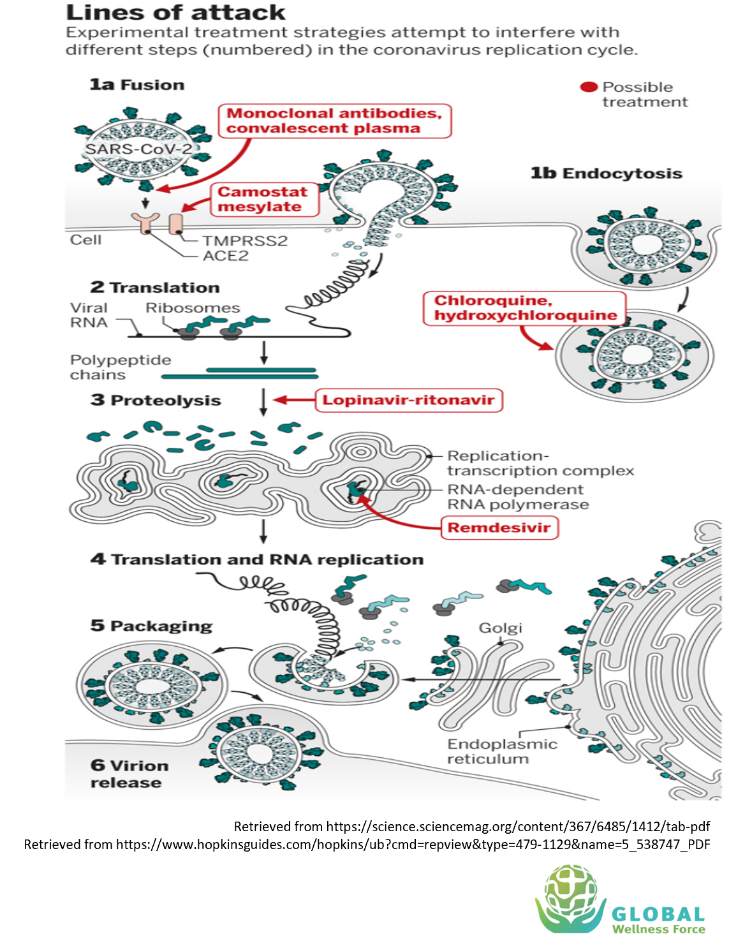
Definitive treatment for &&4& is to eradicate &&12& along the lines of attack to human body.
The graphic here shows the proposed mechanism of action of different medications to eradicate the &&6& at different level along the lines of the &&12& attacks
from inhibiting the &&6& from entering human body cells into truncation of the viral replication and release processes.
Monoclonal antibodies, non-convalescent Intravenous Immunoglobulin (IVIG), convalescent plasma from recovered &&4& patients,
Chloroquine and its less toxic derivative, Hydroxychloroquine and Camostat Mesylate have been proposed to inhibit &&6& from entering human cells.
The HIV combination medication of lopinavir and ritonavir, the drug that was developed to combat Ebola &&6&es, Remdesivir,
have been proposed to shut down &&6& replication processes. The anti-Influenza &&6& medications such as Oseltamivir,
Favipiravir and the respiratory syncytial &&6& ( RSV ) medication, Ribavirin, are also being investigated.
Unfortunately, to this date, there is no proven or robust efficacy of any drugs for humans with &&4&.
No FDA-approved drugs have demonstrated safety and efficacy in randomized controlled trials for patients with &&4&.
Caution is advised to whether any of the medications we discussed here are effective or safe for &&4&.
Use of investigational therapies for treatment of &&4& should ideally be done in the context of enrollment in clinical trials rather than using them off-label.
This method will assist clinicians in understanding if intervention is efficacious for treatment of &&4&.
If we are choosing to use these medications off-label, especially for those critically ill patients, please apply basic medicine principle of ‘do no harm’.
Clinicians should weight all the risks and benefits by taking into consideration all data known including risks of drug therapy.
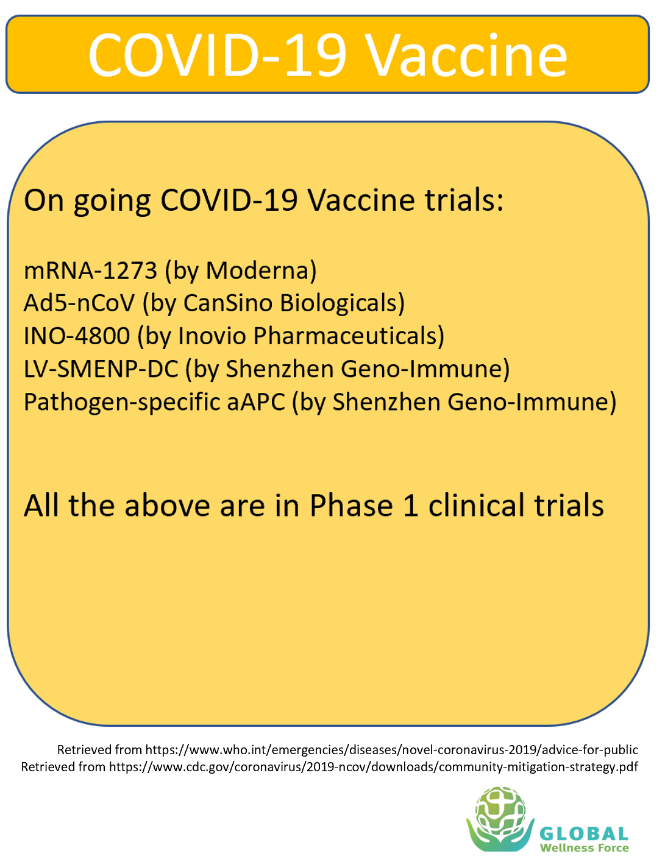
We all know that prevention is better than cure. A vaccine may ultimately be instrumental in controlling &&4& &&5&,
however it takes time to develop. &&4& vaccine clinical trials are underway in several countries in the world.
Listed here are 5 ongoing phase 1 clinical trials on &&4& vaccines with its primary objective is to evaluate the vaccine safety and reactogenicity.
It is important to know that prior to regulatory approval, a vaccine candidate usually undergoes 3 phases of development in humans,
phase 1, 2 and 3 clinical trials, which for the most part progress sequentially. After successful completion of all the 3 trial phases and following licensure of the vaccine,
phase 4 clinical study is a post marketing surveillance study to continue monitor the new vaccine safety and effectiveness in the population. With the current &&4& &&5&,
the vaccine clinical trial has been fast track to complete all the 3 phases in approximately 12 to 16 months, which is significantly shorter than usual.
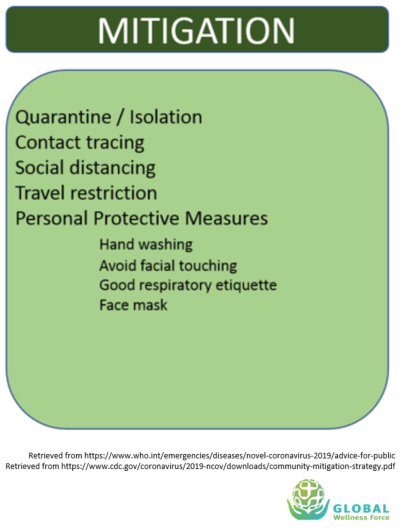
We have learned now that all treatments and vaccine for &&4& are in progress, so what is actually working at this time?
The only thing that has been proven to work worldwide during this &&4& &&5& is mitigation measures.
Community mitigation to help slow the spread of &&4& is especially important before a vaccine or drug becomes widely available.
These measures include quarantine or isolation, contact tracing, social or physical distancing, travel restriction and personal protective measures such as frequent hand washing,
avoid facial touching, good respiratory etiquette such as cover mouth and nose while coughing or sneezing with tissue,
properly disposed the soiled tissue and washed the soiled hand and wearing face mask properly to avoid spreading of &&6& to others.
